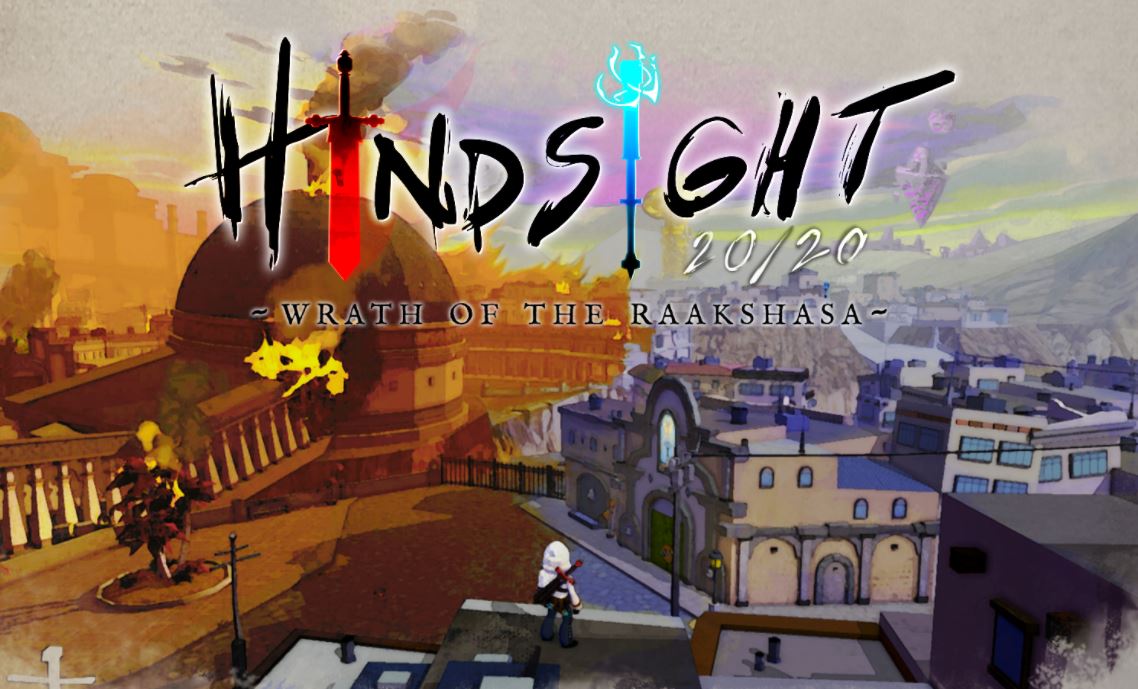A choice driven third person action adventure, Hindsight 20/20 – Wrath of the Raakshasa falls just short of its lofty ambitions. The Finger Guns Review.
When you first start Hindsight 20/20 – Wrath of the Raakshasa, you’re greeted by a message. “Your choices will matter and the story will change depending on them” it says, and that “this game is made for those people who want to fix the mistakes of the past”. Branching narratives are not a new thing for video games and this game relies on them heavily. The decisions you make, even at a granular level like what weapon you use in combat, will alter the story beats and destination. Unfortunately, Hindsight 20/20 – Wrath of the Raakshasa sometimes fails to pull all of that together in a cohesive way, relying too often on lore and exposition rather than straightforward story telling.
In Hindsight 20/20 – Wrath of the Raakshasa, you play as a 1 armed, masked character called Jehan. Years earlier, when his hometown of Champaner was under threat, the protagonist left the city and left the inhabitants to their fate. The Raakashasa, a race of humans infected by a disease which alters their minds and bodies, have used a powerful artefact to lay waste to their human neighbours. When Jehan returns, he finds his city utterly decimated. Wracked with guilt and regret over his choice to leave, Jehan spends years trying to find a way to rectify his mistake. Having finally found a way to rewind time and rebuild his story, Jehan now ventures into Champaner to alter his path and the fate of his city.
After your first binary narrative choice right at the start of the game (which contains an option which will end the game right there and then), you’re thrust into the 3D third person action world. From that moment on, every choice you make has consequences. As you meet new characters, you’ll have multiple dialogue options which can have repercussion based on your tone and content. Threaten someone and you’ll likely start a fight. Forgive past transgressions and a character might let you pass peacefully – but you’re never quite sure what impact that might have later. Every dialogue choice has the potential to strengthen or undo a relationship with a character.
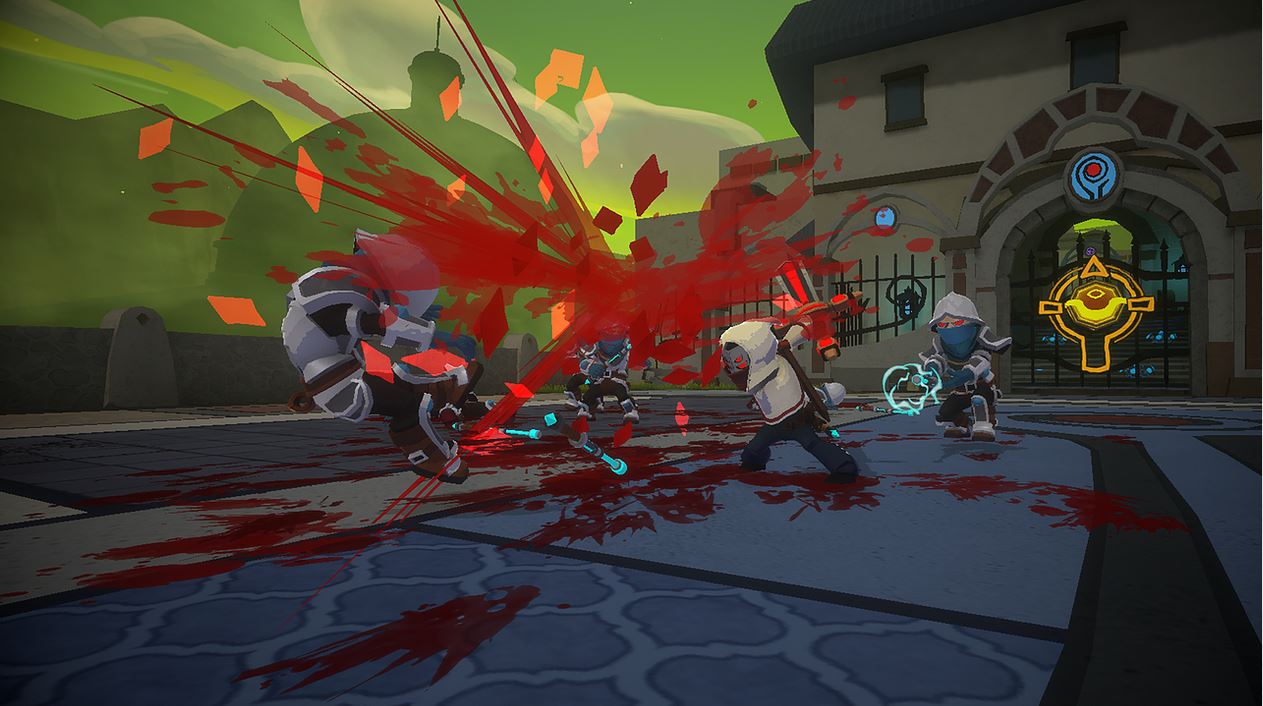
One of the most direct and impactful choices you can make in Hindsight 20/20 – Wrath of the Raakshasa is in regards to combat. Jehan carries 2 weapons with him at all time – a stun baton and a lethal sword – that can be swapped on the fly. The use of these weapons has an influence on the way people perceive Jehan. Walk around murdering everyone with the sword, turning them into bloody chunks, and characters you meet will have a very different perception of you should you use the stun baton to simply incapacitate those in your way, as you might expect.
The way the 2 weapons function in combat is different too. Rather than simply dishing out damage with every slice/stab of a sword/baton, combining hits together is the only way to do damage in Hindsight 20/20 – Wrath of the Raakshasa. The 3rd and 6th attack in a combo are the only ones that will actually hurt a foe. This makes for an interesting take on third person combat as you try to whittle down the health or morale (depending on your weapon choice) of the enemies while trying to pirouette around a battlefield without getting hit yourself. You’ll need different strategies based on your weapon choice too – the sword will rack up a combo if you hack away at the same enemy but with the stun baton, hits have to register on different foes each time to build a combo. You’ll need to employ an Batman – Arkham City style bounce between those you face to get the best out of the stun baton.
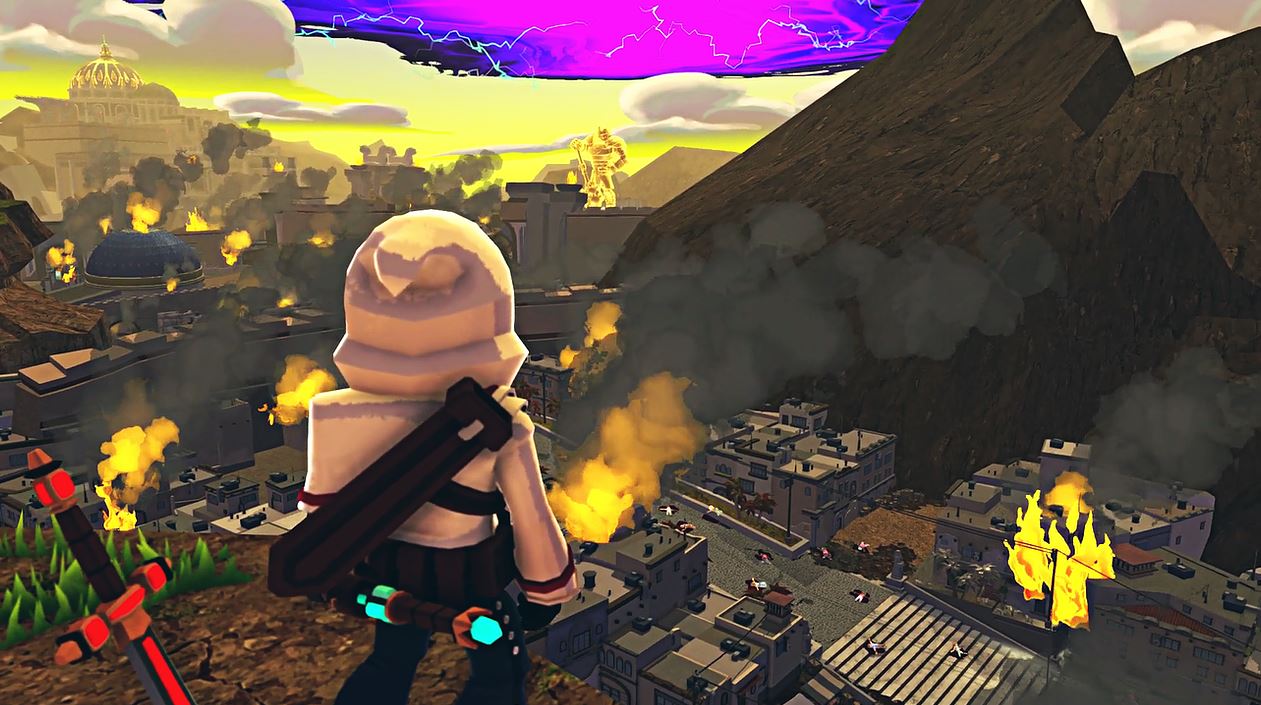
When you’re not fighting off folk, you’ll be dodging obstacles and solving puzzles in Hindsight 20/20 – Wrath of the Raakshasa. There are Zelad-like dungeon side missions in this game that feel like old school RPG’s with rooms full of traps or dangers to navigate through, locked doors to find the keys for and mobs of enemies which have to be vanquished before moving forward. The puzzles are all variations on the classics. There are several puzzles involving blocks which have to be placed on particular squares in order to complete a pattern. There’s also the timeless reflection puzzle that has you place beam altering crystals in specific spots to bounce-shoot a blob of energy into the correct spot. None of the puzzles in the game are taxing in any way, offering little more than a momentary distraction between the brawling.
Regardless of what choices you make, the structure of Hindsight 20/20 – Wrath of the Raakshasa is the same. You’ll always go to the same areas in the same order but the motivations will be different dependent on what you’ve done up to that point. Go around murdering everyone in Champaner and your reasons for moving forward in the plot and beyond the city’s walls will differ should you go around helping everyone and stunning the guards into submission.
This is where Hindsight 20/20 – Wrath of the Raakshasa starts to come undone. While it’s impressive that the game reacts to your decisions in both dialogue and combat, the game rarely gives you impetus to care about any of it. Characters are introduced with a text box that gives you a quick blurb about who they are. This is the total sum of the character development you’ll get for some of the cast. You’re not given time or opportunity to get to know these characters so that you can give a damn about what happens to them. The game is also heavy on lore, just dumped on your regularly, and references past events that are barely explored, expecting the player to just accept the information and base judgements on it. For example, Jehan’s farther was killed years earlier by a pivotal character. This is referenced in passing just once before you come face to face with the character in question. Am I expected to hate this character? Am I expected to want to get a revenge on a death I know nothing about as the player? On my first play through, I was utterly baffled by the binary nature and lack of narrative depth to this and several other sections. This is even more puzzling when you get treated to several flashbacks to events which of no real importance to the story, time which could have been better served fleshing out characters that needed it.
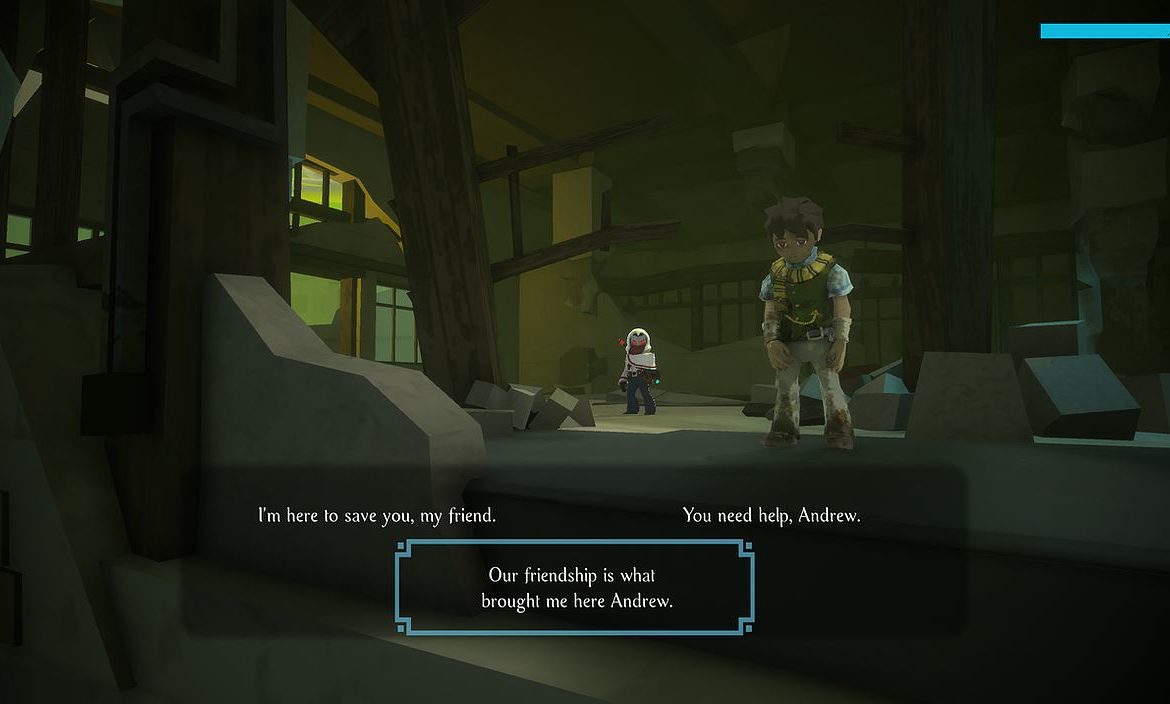
Part of the issue with the story of Hindsight 20/20 – Wrath of the Raakshasa is the way it’s delivered. Outside of conversations with other characters, you’ll be treated to a few cut scenes that get a little self-indulgent at times and are unskippable. These cut scenes are often accompanied by passages of text that play after they’ve finished that give the necessary exposition to explain what just happened. For example, in my first play through of the game, I thought I’d reached what I might describe as “the best” ending. I thought I’d managed to save everyone and be “the good guy”. What followed were some pretty unforeseen consequences that resulted in certain characters killing a bunch of other characters (no spoilers). I sat watching the cut scene thinking “what the hell happened here?” because until the text arrived, it felt so out of the blue and out of character. But I guess that’s part and parcel with Hindsight 20/20 – your choices do have consequences and often, it won’t be something you want to happen.
Because of the branching narrative and multiple endings, there’s plenty of replayability in Hindsight 20/20 – Wrath of the Raakshasa. The game is only a few hours long too so this doesn’t feel like too much of a chore (although, I’d have done anything for a flowchart like system where I could have simply changed just my last decision). It’s here where the narrative starts to build a better picture for itself. You’ll get to witness characters in different circumstances, unveiling different sides to them that you’d previously not seen. Initially friendly characters might have nefarious motivations and villains might not seem so villainous if you’re not approaching them having killed all of their friends. The initial confusion you’ll have in the first few play through will be replaced with intrigue. It’s a shame then that the story doesn’t feel as coherent when played through in isolation of other tries at it.
The PS5 version of Hindsight 20/20 – Wrath of the Raakshasa is visually crisp and really pops on the screen. The art style is reminiscent of the early 3D Zelda games but with far more flair, still relying on bold, solid blocks of colour but with far more detailed trimmings. This isn’t a game going for photo realism. Instead it’s harking back to a time when chunky visuals were the cutting edge. I certainly works and despite this being a modern release, I couldn’t help but feel a pang of fake nostalgia while playing it.
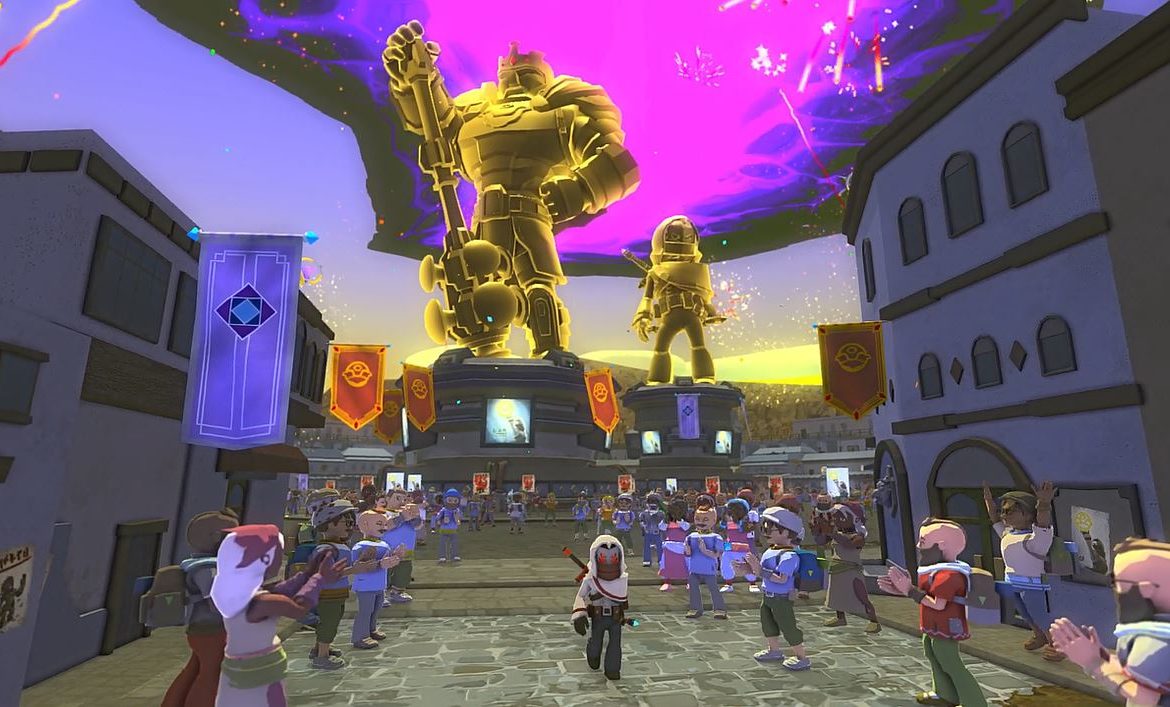
The PS5 version of Hindsight 20/20 – Wrath of the Raakshasa makes some use of the DualSense features too. The triggers can used to activate some powers – but only if you’ve collected enough of a yellow resource to full a gauge. If you don’t have enough of this resource, you’ll feel tension in the triggers, like an immediate indication that says “hey, you can’t do this right now”. It’s smart use of the adaptive triggers.
In many ways, Hindsight 20/20 – Wrath of the Raakshasa reminds me of the type of action RPG game that doesn’t get made these days. While playing it, I felt reminded of the likes of Gauntlet Legends or Rogue Galaxy where the systems were only as complex as they needed to be, appearing almost simplistic by the bloated modern day standard. The game is developed by a group of industry veterans that wanted to make a game that they wanted to play. It shows. There’s aspects of this game that wouldn’t make it into most commercial games these days. While I found the narrative to stumble over itself occasionally, this is still one labour of love worth take a look at.
Player choice has a profound effect on the narrative in Hindsight 20/20 – Wrath of the Raakshasa. Even the choice of weapon can have unexpected consequences later down the line. The game occasionally struggles to wrangle all of this in a coherent way and there are some rough edges but for those that like a game that gets better the more you replay it, this is certainly worth your time.

Hindsight 20/20 – Wrath of the Raakshasa is available now on PS5 (review platform), PS4, Xbox One, Xbox Series S|X, PC and Nintendo Switch.
Developer: Triple-I Games
Publisher: Triple-I Games
Disclaimer: In order to complete this review, we were provided with a promotional copy of the game. For our full review policy, please go here.
If you enjoyed this article or any more of our content, please consider our Patreon.
Make sure to follow Finger Guns on our social channels –Twitter, Facebook, Twitch, Spotify or Apple Podcasts – to keep up to date on our news, reviews and features.
